In dressage, rider position and balance affect everything—the horse’s rhythm and tempo, his longitudinal and lateral balance and his willingness to go forward and come back. Being balanced in the saddle will also make your aids more clear to your horse. But as anyone who rides knows, finding and keeping your balance on a living, breathing, moving animal is an enormous challenge. Some people compensate by hanging on to the reins or gripping with their legs or tightening with their back. The result? The horse is heavy; he won’t go forward or he won’t bend.
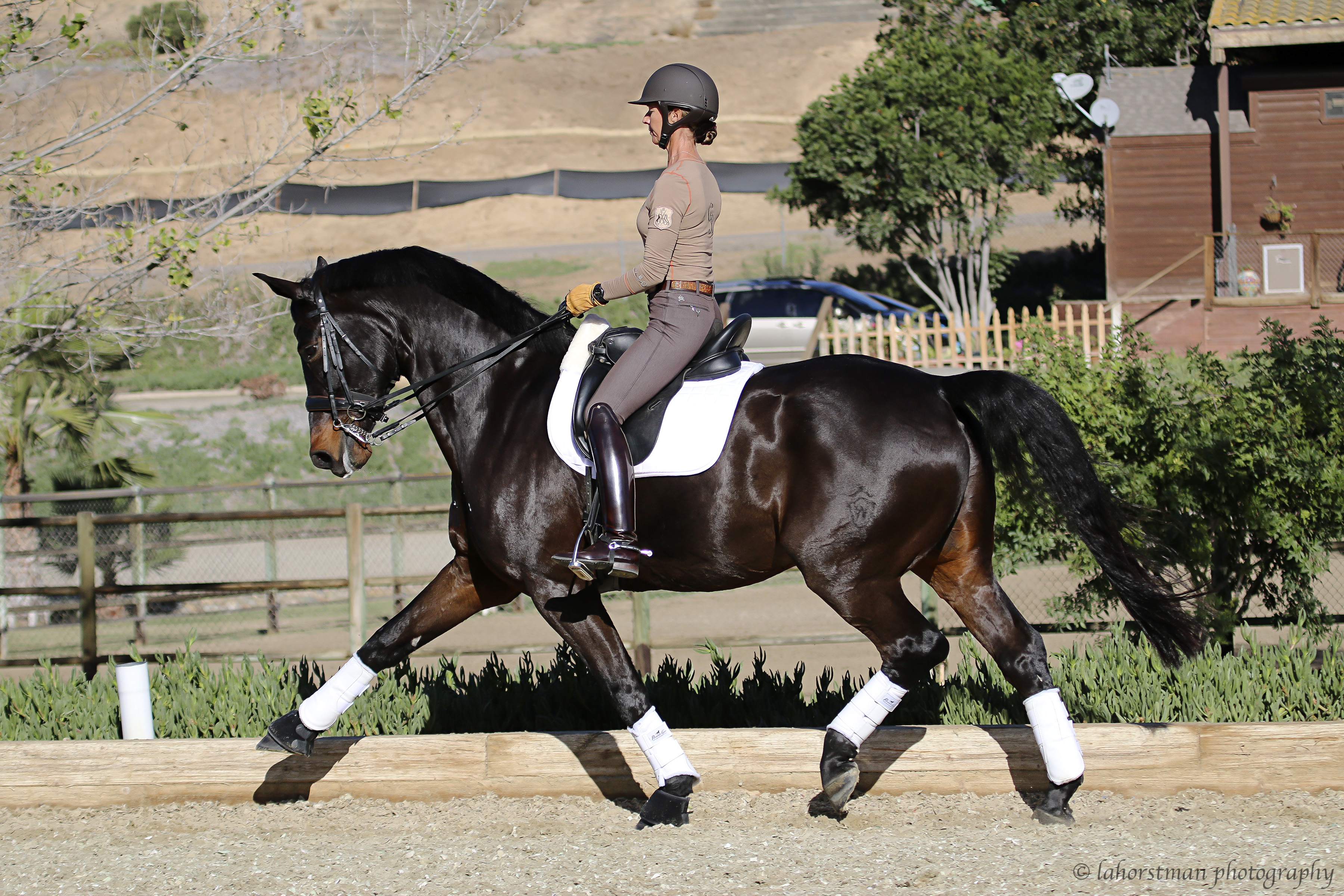
As an Amazon Associate, Dressage Today may earn an affiliate commission when you buy through links on our site. Products links are selected by Dressage Today editors.
It’s our job to work with our conformation and that of our horses to find our core strength and balance in the saddle and maintain them every single time we ride. Just watch riders like my husband, Steffen, or Guenter Seidel, Helen Langehanenberg or Ingrid Klimke: Their bodies seem to match their horses’ movements exactly; the two of them move as a unit, as if their core structures are working together. That should be the goal for all of us. Try the following exercises and keep the ideas I share in mind every time you get on your horse. As you work to develop a stronger core, you may have to pause frequently in the beginning to reassess and readjust your position and balance.
The Dressage Seat
For almost as long as I’ve been riding, I’ve focused on my posture and balance. I’m a small person and these days, I ride some big horses. So I have a checklist that I go through with each horse I ride. If my horse starts to get a bit heavy or gets behind my leg, I always go back to finding my position in the saddle. I ask myself, How could I sit better to help my horse’s balance?
Before I get to my checklist, let’s briefly look at the dressage seat. In classical terms, the dressage seat is formed by the two seat bones and the pubic bone. Together they form a triangle and a base of support for the rider in the saddle. The rider’s ability to engage the appropriate core muscles helps stabilize this base and allows the hips to move elastically with the horse’s back muscles.
My checklist is as follows: Is my base of support correct or have I collapsed forward or back? Are my lower abdominal muscles engaged enough to maintain the three-point contact? Do I feel a good connection in my second group of muscles that stabilize my base, which is from my belly button to the sternum? Is my sternum elevated softly so that my chest is open and my shoulders are softly back and down, connecting my elbows down to my hips, extending to soft lower arms?
To become more effective riders, we have to look at the parts of our bodies that don’t move in harmony with the horse. Some of us have tight legs; others have tight lower backs, braced hips or rigid arms. All these issues inhibit the horse’s ability to move freely. I have a longer waist, so maintaining a neutral spine and not allowing my back to hollow when my horse loses his balance and comes against the contact is a challenge that I continually work on.
Exercise 1: Loosen Your Hips, Legs And Lower Back
Every day when I get on my first horse, I do an exercise that I also encourage my students to do. Most of us get in the saddle, put our feet in the stirrups and off we go to ride, not taking the time to recognize tension in the hips, legs and lower back. Try this to loosen those areas:
1. Sit in the saddle and drop your stirrups.
2. Draw your legs up and over the top of each side of your saddle, close to the pommel. From there, grab the pommel with one hand and the cantle with the other and pull your hips as close to the pommel as you can.
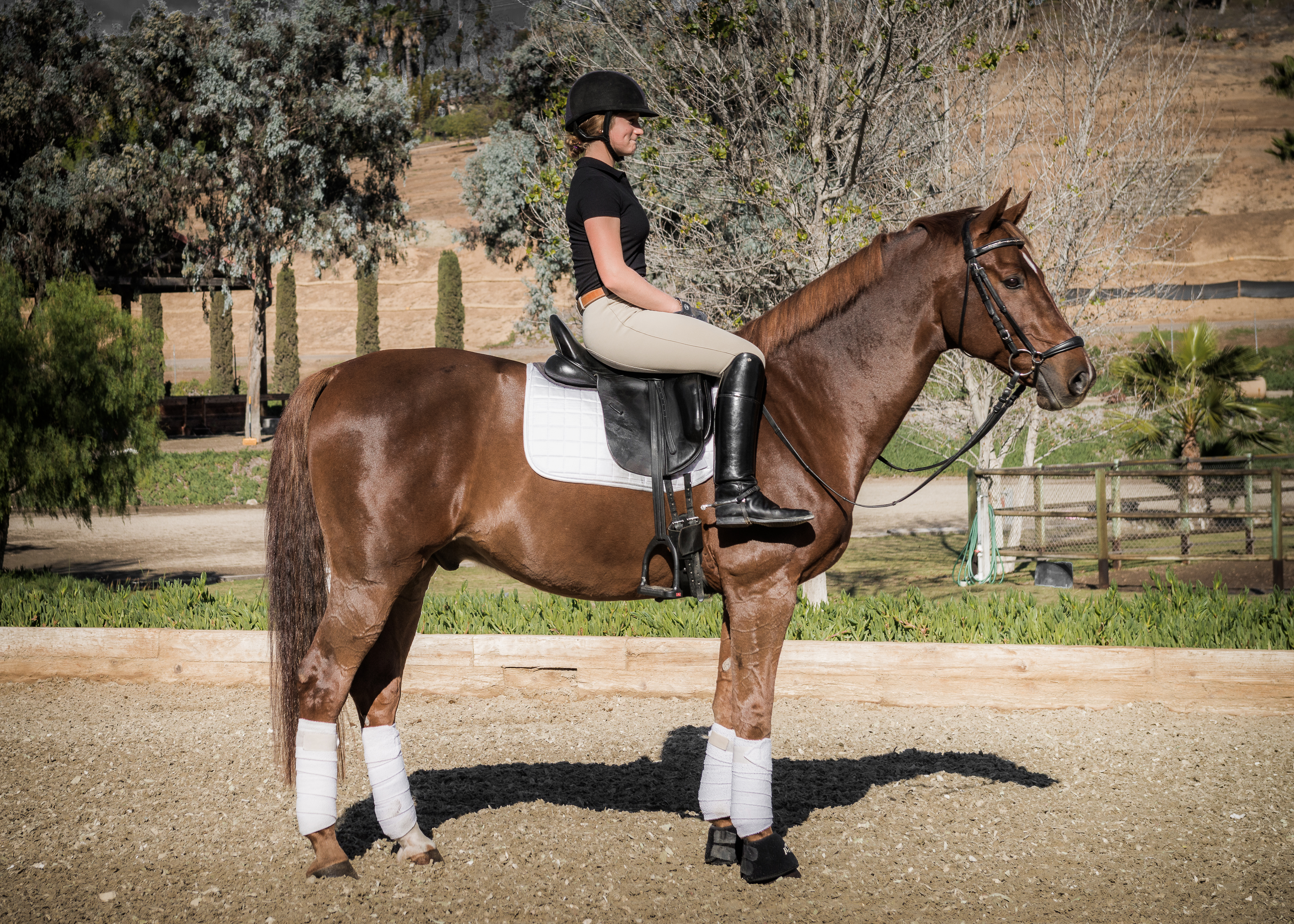
3. Let your legs drop back down against your horse’s sides. You will feel a big stretch in your hip flexors, psoas (the muscles that connect your lower back to the top of the thighs) and inner thigh muscles and, quite possibly, a lot of tightness the first few times you do it.
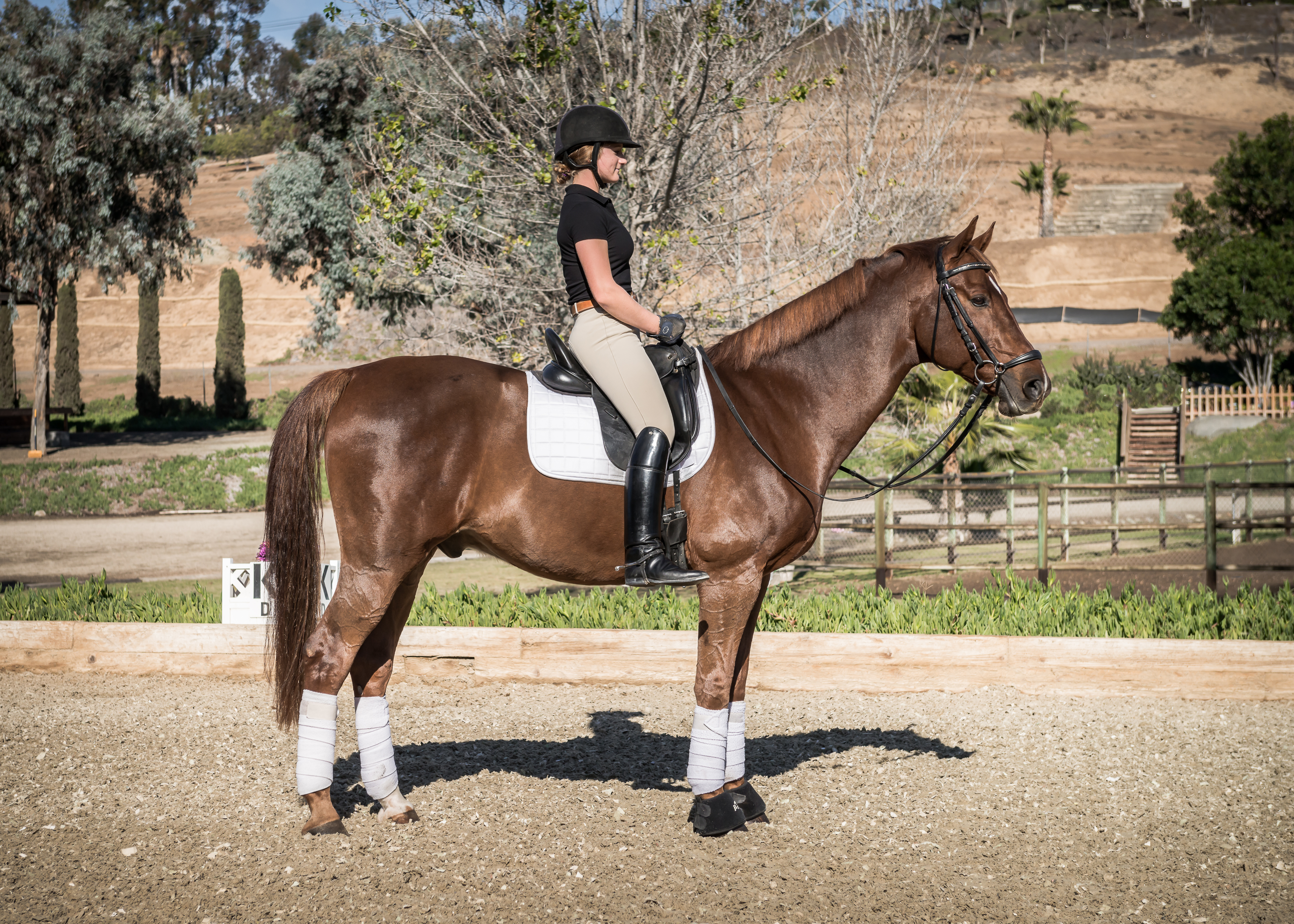
4. Continue to feel your legs stretching down and try to find the three points of contact in your seat as you walk on a loose rein around the arena for 15 minutes.
Go through your own personal checklist for the first few minutes to find your center of balance and connect your postural muscles. Once you have done this, you’ll start to feel how your horse is moving on any given day. Is there a lack of swing through his rib cage or is he swinging more in one direction than the other? Do you feel tightness in your horse’s hips or shoulders? A good walk around the arena on a loose rein with your feet out of the stirrups will show you so much before you even pick up the reins. This will help you formulate a plan for your warm-up to improve the suppleness of those areas you feel need attention that day. You’ll discover what you need to work on to balance your horse before you start working on more advanced exercises.
Engaging Your Core
Keeping your pelvis in balance in the saddle requires that you engage your core muscles, but for every rider that’s a very different feeling to attain because everyone has a different conformation and body type.
When I walk off on my horses for a training session, I think about three areas:
1. My lower core muscles from my pubic bone to my belly button, which stabilize and allow my lower back to relax and absorb the horse’s movement and keep my pelvis engaged toward the pommel.
2. My middle core muscles between my belly button and sternum, which stabilize the midsection.
3. My sternum upward through the top of my head.
By maintaining good posture and alignment of these areas, you increase your effectiveness in the saddle as well as your ability to use independent, balanced aids.
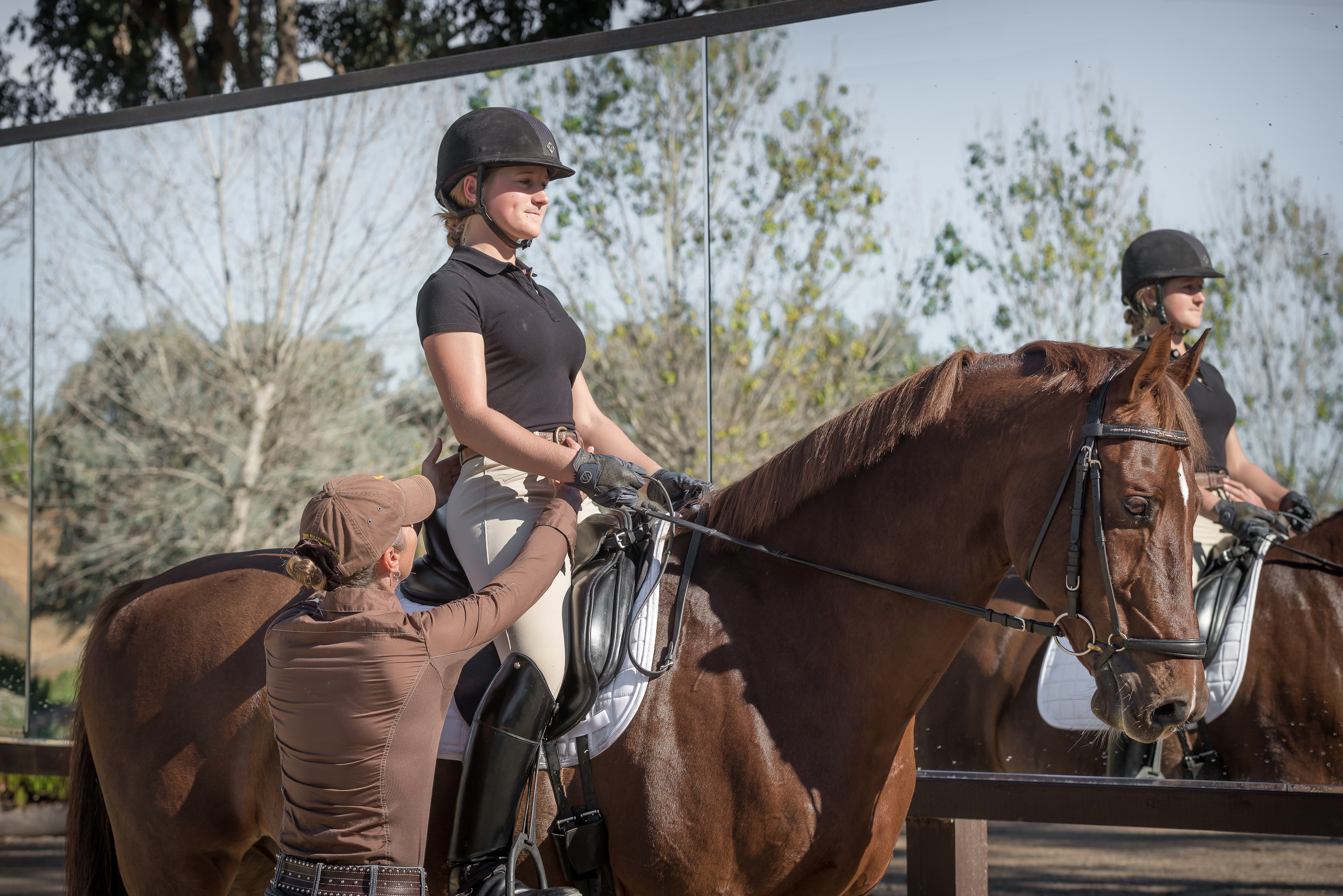
The higher you move up the levels, the more core stability you need, but being able to separate the parts takes awareness. For instance, your legs and arms will try to balance what your core doesn’t balance. So when a rider has a core instability somewhere—it can be in the pelvis, the midsection, the upper chest or the upper back—it always affects what her arms and legs do. Once you have a strong base of support, your legs and arms can independently give an aid without your body pitching forward or back.
In her book Centered Riding, Sally Swift talks about the building blocks of an effective position. Being able to isolate the muscles in your lower and middle abdominals is key to maintaining proper alignment, as does being able to open your chest muscles and contract those of your upper back. Working toward balance and symmetry in these muscle groups leads to a rider who can use independent aids from supple hips and legs as well as soft rein aids from a balanced upper body.
Exercise 2: Engage Your Core
So what does it mean to engage your core? Every rider needs to find his or her deep core muscles without leaning back or bracing. Starting at the walk, try this exercise to attain the feeling of engaged abdominals and a neutral lower spine:
1. Find your neutral lower spine in the saddle by starting with the first exercise to loosen your hips, legs and lower back.
2. Engage your lower abdominals to feel as though there is a bungee cord pulling your hips toward the pommel, maintaining the feeling you just created with the leg exercise.
3. Without bracing, maintain that positive tension of the bungee cord in your lower abdominals. Then engage and lengthen your abdominals from your belly button to your sternum. I find this to be one of the more difficult things for most riders to do. You should feel like you are balancing your body toward your horse’s ears to create the feeling of going with his movement.
4.You should feel as if you could easily lift both legs off the sides of your horse while maintaining the correct abdominal posture.
5. This proper alignment of pelvis and spine should also create a rider that doesn’t clench her buttock muscles or grip with her legs or arms for balance.
Improving Your Leg
For riders who need to improve their lower leg position, I first check to see that their seat and balance are correct. This is generally where a loss of position in the lower leg starts: Some riders grip with their knees or sit with their upper body too far back, which sends their legs and feet too far forward to counterbalance. But riders must pay attention to their leg position as well. Maintaining a good ear–hip–heel alignment is what you are aiming for.
Exercise 3: Improve Your Leg Position
Riding with the backs of your legs or hamstrings helps to align your thigh downward. This exercise accomplishes a couple of things: It engages your hamstrings and it helps to lengthen your inner thigh muscles down to the knee. Here’s how to improve your leg position:
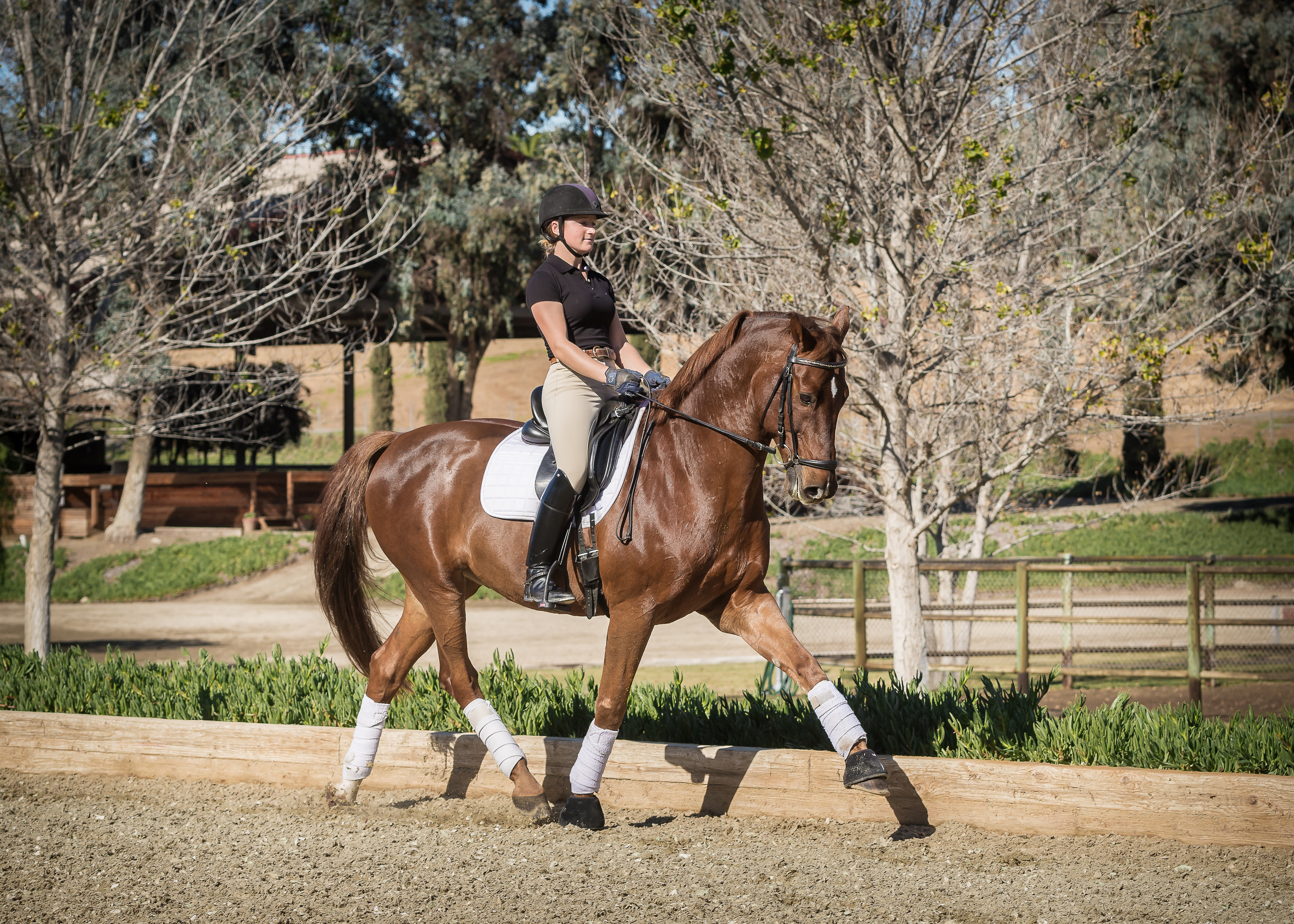
1. While sitting in the saddle, imagine there is a large, soft tennis ball behind each of your knees. Lightly flex your hamstring muscle in the back of each leg so as to hold your imaginary tennis balls in place. Try to maintain the feeling of keeping the tennis balls behind your knees for your entire ride.
2. Stretch your heels down, without bracing or creating tension, maintaining a nice elastic feel down the leg.
3. If you find yourself losing your stirrups, you might need to shorten your leathers until you can achieve more supple hip, knee and ankle joints.
Becoming a More Effective Rider
When I look at a horse and rider, I look at how they move together. Does some part of the rider look disconnected or imbalanced or does she interfere with the horse in some way? Is she sitting on her seat bones, and does the middle of her body stack above her hips? How do her legs drape around her horse? What about her head position? I like to see a cohesiveness in the movements, that the joints in the horse’s body look like they’re working together with the joints in the rider’s body. Horse-and-rider combinations usually reflect one another’s dysfunction, so a horse with a tight back often has a rider with a tight back and/or hips. Or a horse that is pullings usually correlates to a lack of balance in the rider or the combination of horse/rider.
If a rider has a good seat, a good leg position and an engaged core, that rider is more likely to be effective. Riders sometimes try to find their balance by squeezing their legs or driving with their seat instead of allowing the horse to come up to them. You create expression, balance and suppleness in your horse through your good position and by not losing your place of balance in the saddle even if your horse loses his.
Your horse will always follow your weight. So if you’re sitting out of balance—for example, heavier on one seat bone or collapsed through your hip—the horse will generally follow your weight, no matter what your leg or hand may be telling him to do. It’s the job of the rider to communicate her aids clearly to the horse. And it’s the rider’s responsibility to know how much of an aid she is using and what the response is from the horse.
Create an Elastic Feel
Our goal as riders is to create a place in the contact that you want your horse to come to without tension. Once you’ve begun to establish a secure, independent seat, you can start to develop a soft, supple contact.
Exercise 4: Develop a Soft, Supple Contact
1. With correct upper-body posture—chest open, shoulders down, into heavy elbows—make sure you’re holding your reins completely and not grasping them with the tips of your fingers.
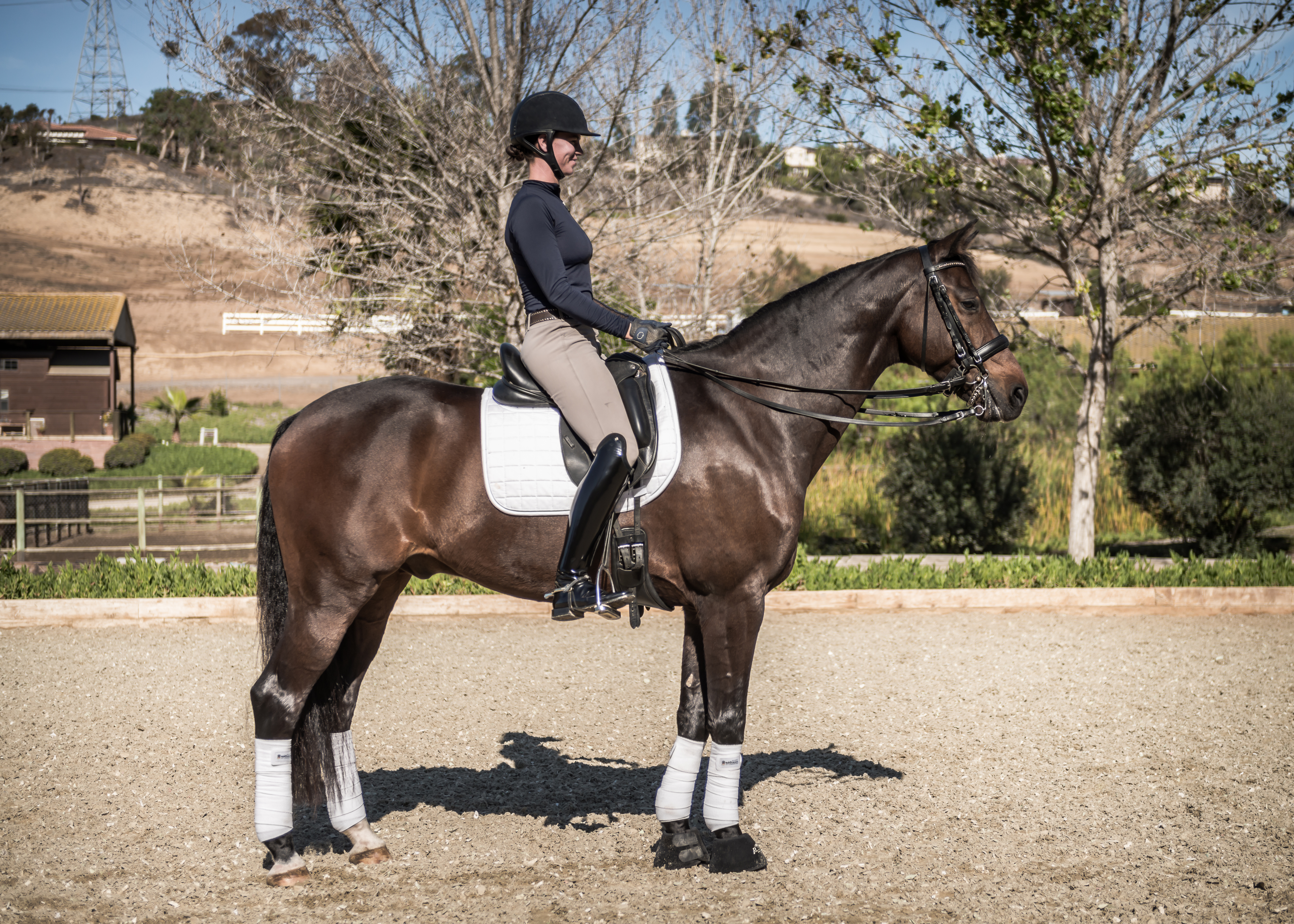
2. Firmly, but without tension, close all four fingers and turn your hand upright with your thumb on top.
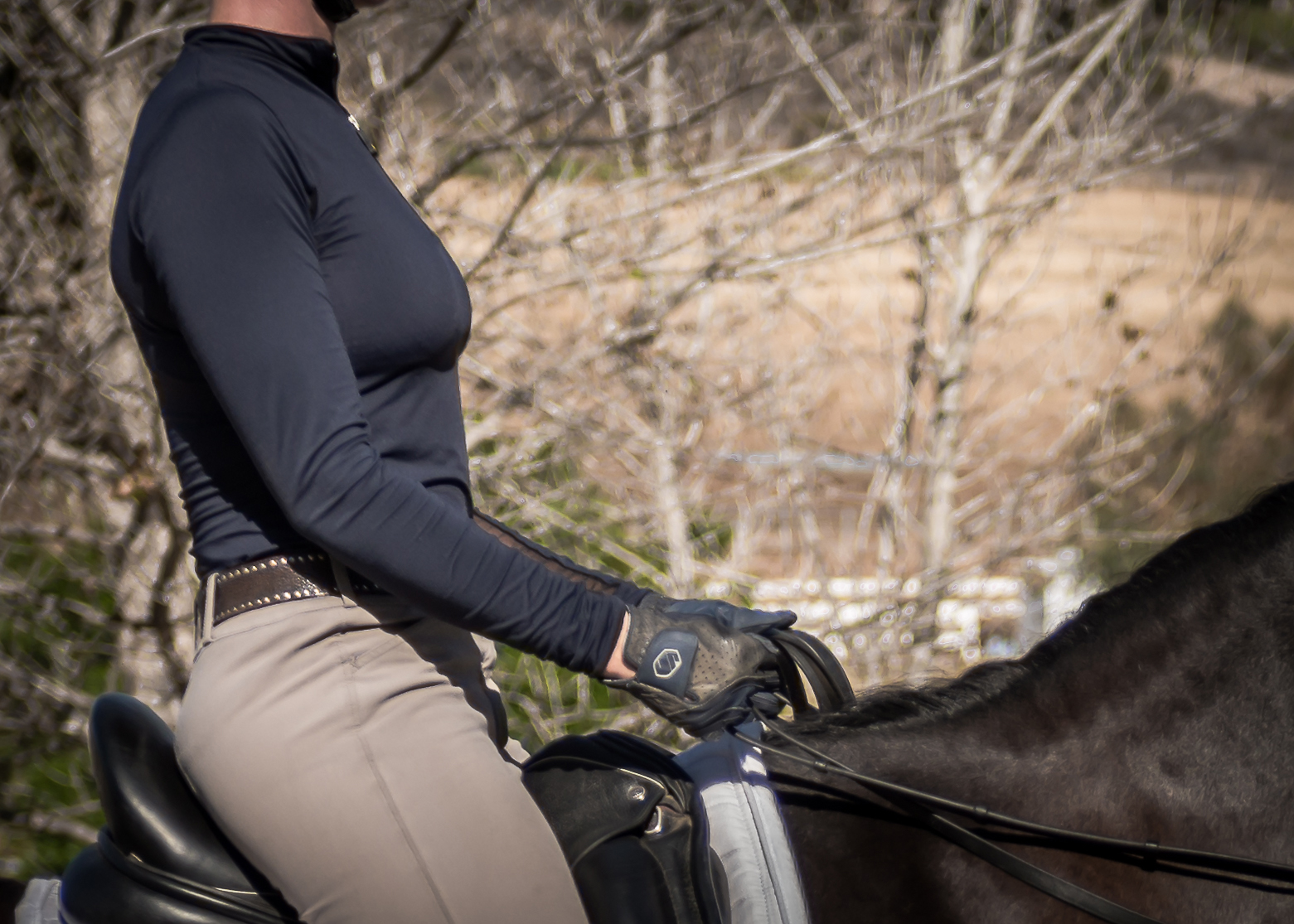
3. Now the important part: Close each thumb flat down on the side of your index finger. To maintain the proper feeling in your hand, your thumb should feel firmest of all.
4. Develop a good connection in the rising trot. Each time you touch down in the saddle, think of dropping your shoulders into your elbows (with an elevated chest and sternum) and giving your thumb a squeeze to help create the correct feeling to your horse’s mouth. This exercise should be subtle enough that no one sees it, but you’ll be surprised at how establishing this correct arm/hip position in the beginning can really influence the rest of your ride, because it allows your wrist to softly communicate with the horse’s mouth.
Only when we have established an independent, supple seat with the appropriate postural muscles to maintain our balance can we start to truly achieve an elastic connection with our horse.
Correct Posture as a Way of Life
Many of my students work at desk jobs or drive long distances to get to the barn and it affects their position on the horse: Their heads might be a bit forward or their core is collapsed and their shoulders rounded. It’s very difficult to sit correctly in the saddle if you’ve been sitting for a long time in front of a computer or behind the wheel. Awareness of proper spinal alignment throughout the day is so important. It will help train the muscles you need in the saddle.
Strength training, Pilates, stretching and many other activities are absolutely beneficial to balance muscles that you over- or underuse when riding. Your core muscles can be strengthened outside of the saddle, but be mindful that you strengthen them in the saddle as well. Keeping a healthy balance of work in and out of the saddle will give you many years of comfortable, fun and effective riding and alleviate a lot of structural issues for you and your horse.
Tips:
• Create a checklist at the beginning of each ride
• Loosen your hips, legs and lower back at the start of your ride
• Be aware of your posture throughout the day
Finding My Dressage Seat
I grew up riding Arabians in saddle seat, which meant my feet were up close to the horse’s shoulders and my back was hollow. When I switched to dressage at about 19, it was quite a challenge to change the way I sat in the saddle and change the muscles I used to ride in proper alignment, ear to hip to heel. Part of how I learned was from experience on a longe line. Riding without stirrups and reins is the single best way to accomplish finding your center of balance in the saddle. Of course, this requires a good longe horse and an instructor to help you with biomechanics.
I’ve had some wonderful teachers along the way. My first dressage instructor, “S” judge Debbie Riehl-Rodriguez, taught me so much about basic balance in the saddle and about being an effective rider. Nancy Baker gave me ideas that I use to this day with my riders and myself. My greatest influence has been Karl Mikolka, the former chief rider of the Spanish Riding School, with whom I have ridden for 18 years. He is so adamant about the smallest details, like the thumbs and the elbows and that how you sit in the saddle can enable you to be an effective trainer. I am also fortunate to have my wonderful husband’s watchful eye every day.
With my own students, I always try to keep things as simple as possible. We might work on one or two things per lesson that they can accomplish before moving on. That way, they always have tools when they’re riding by themselves or when they’re having difficulties with their horse.

Shannon Peters is a popular clinician and teacher as well as coach to her husband, three-time dressage Olympian Steffen Peters. Shannon began riding and competing in Western and saddle seat in her native Michigan. College took her to Boulder, Colorado, where she developed a successful dressage training business before moving to San Diego in 2002. After Shannon married Steffen in 2004, the pair started SPeters Dressage in San Diego. A USDF bronze, silver and gold medalist, Shannon is a three-time national championship competitor: on Luxor in 2007 when the two were crowned Reserve National Champions Intermediaire I; on Flor de Selva in 2009 when they took home fourth place in the Intermediaire division; and on Akiko Yamazaki’s Odyssey in 2011 after winning the Grand Prix Special at the Del Mar and Burbank CDIs in California. With Jen and Bruce Hlavacek’s Westphalian gelding, Weltino’s Magic, Shannon won Reserve National Champion in the 6-year-old division at the 2008 Markel/USEF Young Horse Championships, and Steffen won team and individual gold medals at the 2011 Pan Am Games in Guadalajara, Mexico. Special thanks to Shannon’s student Ehren Volk riding Vaya Con Dios and to Dawn White-O’Connor riding Aristo for participating in the photo shoot.











